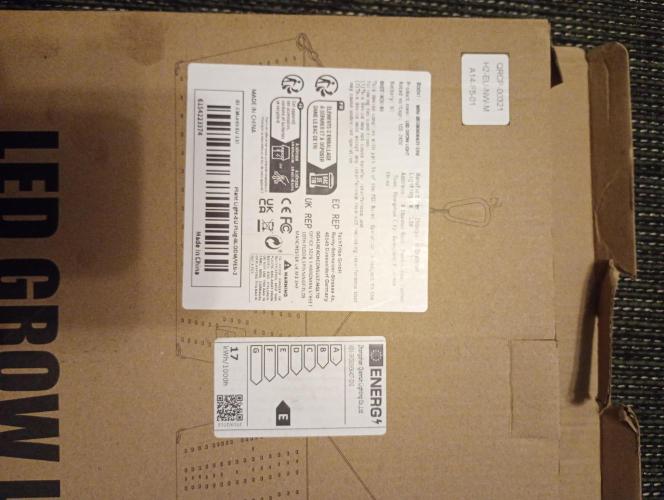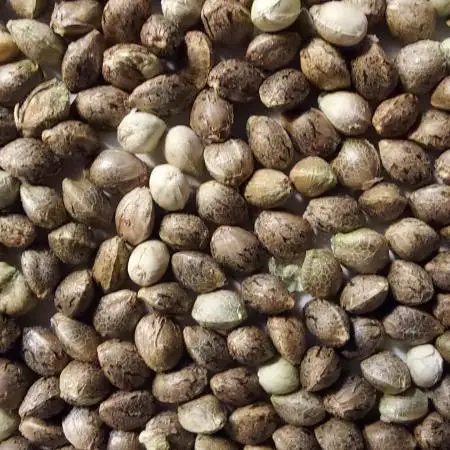The Grow Awards 2026 🏆
Led Grow Light Full Spectrum 17 watt???
Baryon23KoekNLstarted grow question 9mo ago
I have a question about the LED lamp I am using. Led is new to me and previously I calculated via the wattages of the lamp but is that the same for LED? If so, the lamp I am currently using is full spectrum but is only 17 watts, can this be correct? 😐
Solved
Week 1 likes
Ninjabudsanswered grow question 9mo ago
Hey there I’m sure that light is probably fine for a seedling maybe for the 1st week or 2
I suggest you look into spider farmer or mars hydro or medicgrow for a legit light
I use a 100w spider farmer for seedlings and a medicgrow mini sun2 500w for my 2x4 tent
You can get away with 100w per 2x2 area when flowering bud the buds will be airy
If you want to grow buds equal to what you buy at a dispensary you need about 200 to 250w of led per 2x2 area
So a 200w for 2x2
400w for 2x4
800w for 4x4
1000w for 5x5
00110001001001111Oanswered grow question 9mo ago
unlike hps or cmh bulbs, the efficacy is not standardized. So, depending on the efficacy of the LED you bought, it wil impact how many watts per sq ft you need.
Switch to umol/s of PAR. This is apples to apples. Daily Light Integral (DLI) is what matters. There are DLI tables to reference with simple google image search.
For ambient co2 conditions, you should shoot for 35-40DLI produced by the light at the diode. With normal hanging distances for QB and bar/strip style frames and reflective walls, it is a great starting point. No matter what suggestion you start with, you will need to observe and adjust based on plant growth. Local variables makes for different 'max' DLI in any 1 garden.
If used to metric, no conversions necessary. Umol/s of your light per m^2 and then reference the DLI table with that value and hours of use. 800-900 umol/s of par per m^2 will be roughly 35-40 dli. (2m^2? then you want the light to produce 1600-1800umol/s over 12 hours... 0.5m^2 then you want 400-450 over 12 hours.)
It's proportional to time (inversely 1:1) and umol/s (direct 1:1) output.
per sq ft..
70-80 umol/s PAR per sq ft for 12 hour operation.
67% of that for 18 hour operation.
multipling that by 10.764 will give you "ppfd," which can be referenced with hours of operation on a DLI table... you'll see it all falls in the 35-40 dLI range.
The math really is easy once you get the relationships.
The highest efficacy LED options only need about 30-32 watts/sq ft over 12 hours. (again, 67% of that for 18 hours vege or autoflowers). The shitty LED still need about 40w per sq ft for 12 hours. You can see a 25-33% difference in wattage needs simply due to efficacy and all other factors remaining the same. Efficacy is what you pay for. Higher efficacy saves electricity and reduces heat produced (usually a benefit, too). It also increased longevity. Any deviation from the diode's manufacturer spec sheet testing paramaters means shorter life / less efficacy. This is info you can look up and compare.
1 like
Complain
All_our_small_plantsanswered grow question 9mo ago
Wenn diese werte richtig sind dann wird sie nicht ausreichen um deine Pflanzen wachsen zu lassen. als Vorzucht lampe geht sie aber nicht als grow.
Bist du dir sicher das sie nur 17 watt hat?
Du must deine lampen so einstellen das sie die richtigen DLI werte hat
Der Daily Light Integral (DLI) ist entscheidend da er die Gesamtmenge des nutzbaren Lichts misst, die eine Pflanze pro Tag erhält. Hier sind empfohlene DLI-Werte für Cannabis in verschiedenen Wachstumsstadien:
Keimlingsstadium: 10–15 mol/m²/Tag
Vegetatives Stadium: 30–45 mol/m²/Tag
Blütenstadium: 30–40 mol/m²/Tag
Die Anpassung des DLI umfasst die Verwaltung der Lichtintensität (PPFD) und der Photoperiode. Ein optimaler DLI sorgt für ein gesundes Wachstum.
Lade dir die App Photone Runter und dort kannst du dann denn DLI wert an der Spitze deiner Pflanzen messen.
Es gibt sehr Gute Lampen für nicht al zu viel Geld
Ich nutze die 100 Watt lampen von Spider Farmer un die bekommt mann ab 100€ und sind wirklich gut.
3 likes
Complain





